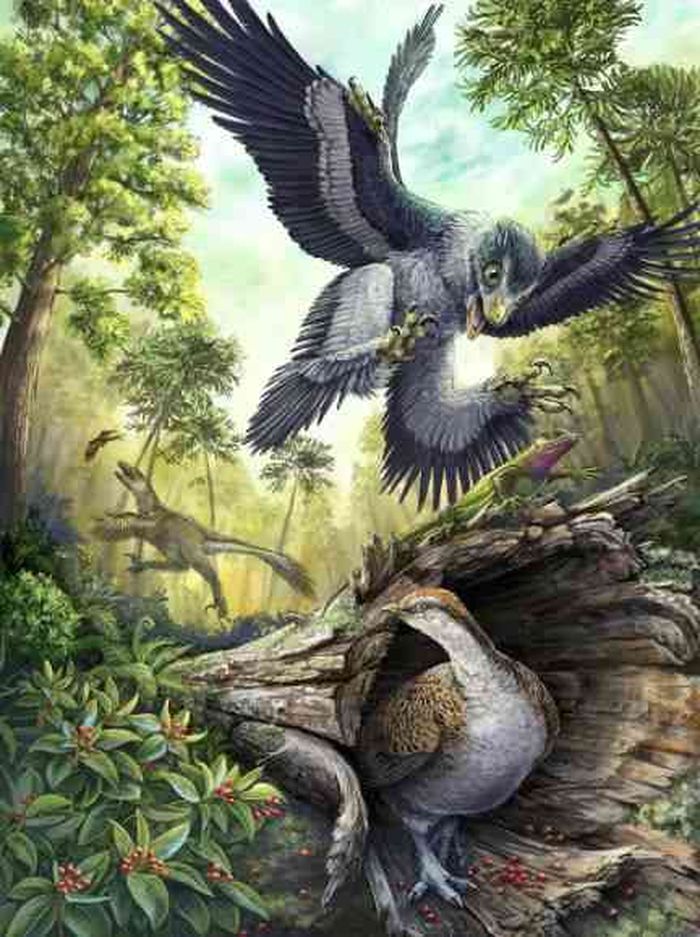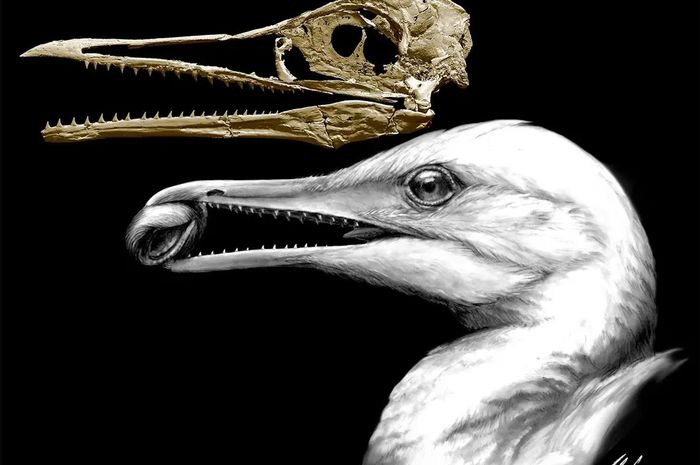Yale University
–
Ichthyornis dispar has a beak full of teeth. The discovery of this bird fossil helps answer why only birds were able to survive the Era of Dinosaur Extinction on Earth.
–
Nationalgeographic.co.id—About 66 million years ago, the dinosaurs that ruled Earth suddenly became extinct along with a third of life on Earth. Scientists believe that birds are the only dinosaurs left on Earth today, why?
Paleontologists believe that birds were able to survive the extinction some 66 million years ago. However, to date, there has been much discussion about what enabled birds to survive the extinction.
Invention bird fossil by scientists led by The University of Texas in Austin may be able to answer that. The results of the study were published in the journal peer-review Science Advance on July 30, 2021.

Danielle Dufault
–
Scientists believe that birds are the only dinosaurs left on Earth
–
Lead researcher Christopher Torres undertook this research and earned his Ph.D. from the UT College of Natural Sciences. He said that birds have more complex brains than any known animal other than mammals. “This new fossil finally allows us to test the idea that the brain played a major role in their survival,” he told UT News.
The ancestors of living birds, according to Torres, had a brain shape that was much different from that of other dinosaurs, including other ancient birds. This suggests that brain differences may have influenced survival during the mass extinction that wiped out all non-avian dinosaurs. The brains of ancient birds have come a long way from other dinosaurs.
Torres explained, the fossil is about 70 million years old and has a nearly complete skull. The findings include a rare occurrence in the fossil record that allows scientists to compare ancient birds with birds living today.
Also Read: Scientists find 46,000-year-old frozen horned bird in Siberia

Christopher Torres / University of Texas at Austin
–
Fossil skull of Ichthyornis, a bird that lived 70 million years ago during the late Cretaceous.
–
The fossil is a new specimen of a bird named Ichthyornis which went extinct at the same time as other non-avian dinosaurs. Ichthyornis lived in what is now Kansas during the late Cretaceous Period.
Ichthyornis is also known to have a mix of characteristics like avian and non-avian dinosaurs, including a jaw full of teeth but a beak. The intact skull allows Torees and his collaborators to study the brain further.
By using CT-imaging data, the researchers reconstructed and made a 3D replication of his brain called an endocast. The researchers then compared the endocast with 3D replications of more distant dinosaur relatives and modern-day birds.
The researchers found that the brains of Ichthyornis had more in common with non-avian dinosaurs than living birds. In particular, the hemispheres of the brain that have cognitive functions such as speech, thinking and emotion as in humans, are much larger in living birds than in living birds. Ichthyornis.
Also Read: Ivory hornbill, an ancient bird that can live for decades, reportedly has an Endangered status

Christopher Torres / University of Texas at Austin.
–
Transparent 3D model of Ichthyornis’ skull and brain (in pink).
–
According to the researchers, the pattern suggests that these functions could be linked to its ability to survive a mass extinction. “If a brain feature affects survival, we would expect it to be present in survivors but not in victims, such as Ichthyornis. That’s what we see here,” Torres said.
The search for skulls from these ancient birds and closely related dinosaurs has challenged paleontologists for the past hundred years. Bird skeletons are notoriously fragile and rarely survive in the fossil record intact in three dimensions. Well-preserved skulls are extremely rare, but that’s exactly what scientists need to understand what their brains looked like in life.
According to Julia Clarke, Professor at the UT Jackson School of Geosciences and one of the study’s authors, the findings are important. Fossil Ichthyornis, he said, help to answer some persistent questions about the life of birds and their survival among dinosaurs. “Ichthyornis is the key to unraveling the mystery,” he said.
Also Read: Two million years ago, humans ate a giant bird weighing 453 kilograms
PROMOTED CONTENT
Featured Videos
– .


